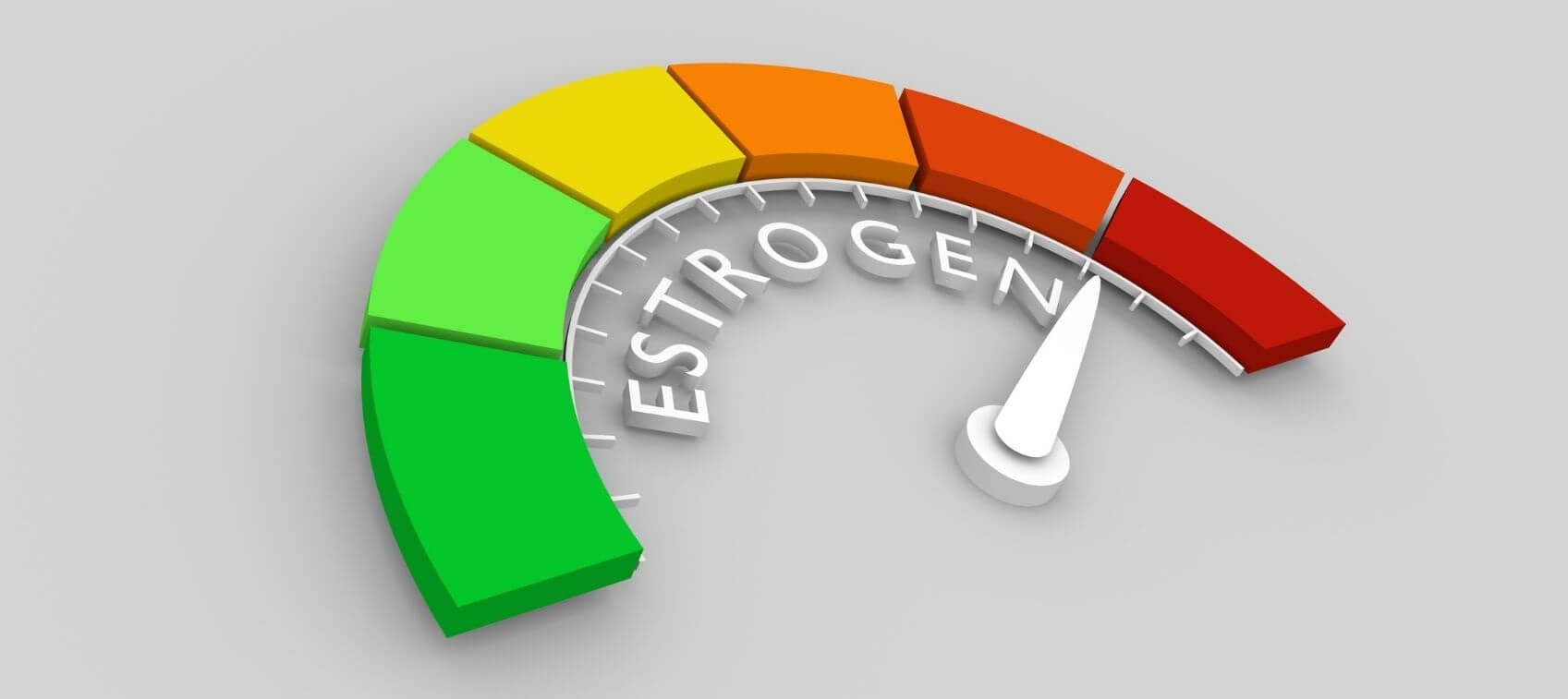
Estrogen dominance is a topic I focus a lot on within my medical practice. Estrogen is a very important hormone. It’s essential for the development of our female sexual characteristics that happen at puberty, as well as fertility and bone, cardiovascular, and cognitive health. But estrogen can also wreak havoc on the body if it’s not in balance with your other reproductive hormones, especially progesterone.
Estrogen and progesterone have a pre-choreographed dance throughout your cycle that plays a beautiful tune when they are in balance. Estrogen typically dominates the first half of the cycle, while progesterone increases and dominates the second half. It’s when these hormones go off beat and estrogen levels get relatively high compared to the level of progesterone that undesired symptoms can occur.
Common indicators of estrogen dominance include:
- Fibroids
- Endometriosis
- Irregular menstrual period
- Heavy bleeding
- Painful cramping during your period
- Enlarged and tender breasts leading up to your period
- Changes in your mood and emotions leading up to your period
- Hormonal weight gain
And when symptoms associated with high estrogen are not addressed, you could be putting yourself at risk for the development of hormonal cancers. As they say, “an ounce of prevention is worth a pound of cure,” so I believe it’s important to listen to your body as soon as it starts talking and address any abnormal symptoms as soon as they pop up.
Causes of estrogen dominance can include:
- Being overweight or carrying excess fat tissue in your body. Fat tissue not only absorbs and stores estrogen circulating in your bloodstream, it also synthesizes estrogen from other hormones. High estrogen levels alert your body to make more fat cells, which produce even more estrogen, creating a vicious cycle.
- Chronic stress, which can negatively impact your adrenal health and contribute to blood sugar dysregulation.
- Consuming excess sugar and refined carbohydrates and not enough healthy fiber or other foods that naturally help eliminate estrogen from the body—cruciferous vegetables, mushrooms, red grapes, flax seeds, whole grains.
- Exposure to xenoestrogens—chemicals that mimic the behavior of estrogens. They’re everywhere in our environment—in our food, personal care products, furniture, clothes, and the list goes on. We encounter a shocking number of these endocrine-disrupting xenoestrogens in a single day.
- Genetic factors such as COMT (catechol-O-methyltransferase) and MTHFR (methylenetetrahydrofolate reductase) can impact how you metabolize estrogen.
- Gut health. Your gut microbiome regulates estrogen using an enzyme known as beta-glucuronidase. When your microbiome is out of balance, it can’t properly metabolize estrogens.
Lifestyle Changes to Help Prevent Estrogen Dominance
Eat clean food
Choose organic produce whenever possible; especially avoid the dirty dozen. Eat plenty of brassicaceae (cruciferous) veggies (brussels sprouts, broccoli, cauliflower, kale, collard greens, cabbage, and bok choy). They help your body produce more gentle-acting estrogen versus stronger-acting estrogen that is associated with negative hormonal symptoms.
When eating meat and animal products, choose organic, grass-fed, and pasture-raised. Avoid GMO foods, high fructose corn syrup, and hydrogenated oils. Instead choose olive oil, avocado oil, coconut oil, and ghee. Get plenty of the beneficial essential fatty acids in your diet by eating nuts, seeds, and small wild fish.
I also recommend fiber from fresh veggies, complex carbohydrates, and ground seeds such as flax. It acts as a beneficial phytoestrogen, which helps support hormone levels when your estrogen is high or low. Plus, it helps bind excess estrogen in your gut to help your body clear it out.
Optimize your detoxification systems
It’s important to make sure that both your digestive system and liver are functioning optimally. If they’re sluggish or backed up (i.e., constipated) the body’s ability to break down estrogens and remove them will be reduced. Taking a daily probiotic promotes a healthy gut, which helps keep your hormones in balance.
Correct nutrient imbalances with supplements
I recommend my patients take a high-quality multivitamin that includes important co-factors such as B vitamins, magnesium, zinc, and selenium. Other supplements that influence estrogen metabolism include: DIM (diindolylmethane), I3C (indole-3-carbinol), calcium d-glucarate, and sulforaphane.
I recommend finding a practitioner who can check your hormone levels and help you achieve hormonal balance through a whole-body approach. Once you make the lifestyle adjustments to avoid estrogen dominance, you’ll start to feel like yourself again. And you’ll have peace of mind knowing you’re reducing your risk for a number of chronic illnesses.


